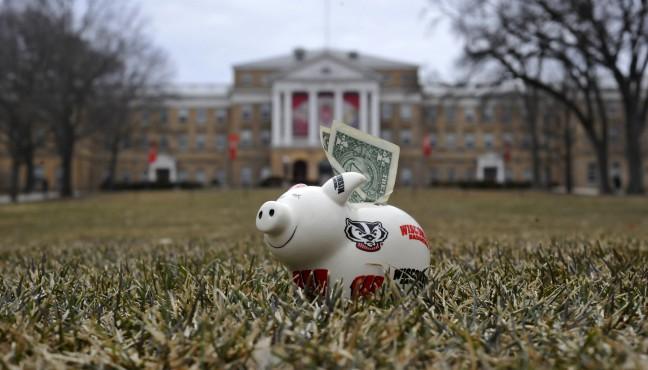Despite a proposed federal budget of a record $4.8 trillion, cuts to education have proven to be inevitable.
In the proposed budget for the year 2021, the U.S. Department of Education is facing a 7.8% decrease in federal funding. Several federal education programs are susceptible to elimination, and others to be combined into block grants, leaving their funding allocation up to the states.
A block grant is essentially a blank check given to state or local government, and is designated for specific programs. That grant is then dispersed among the programs, giving states the power to determine how much each program gets. In the proposed budget, 29 programs will be consolidated, which includes Title I aid for disadvantaged students and funding for charter school expansion.
Programs that are up for elimination include subsidized student loans and the Public Service Loan Forgiveness Program. Subsidized student loans are given out based on parental income, financial need and the amount of tuition you must pay. These programs allow students in both undergraduate and graduate programs to borrow money to pay for school without accumulating interest at first. This allows students to earn their degrees before interest starts building up on their debt.
Unsubsidized student loans won’t be cut, which mandate interest on the loans while degrees are being completed. This means that if you are to obtain a student loan, interest will start accumulating while you are in school, forcing students into more debt than they would have already been in.
The other major program that the budget is intending on cutting is the Public Service Loan Forgiveness Program. This program allows people who have worked for 10 years in public service — paying off the loans the entire time — to have their student loans eliminated after that 10 year period.
Teachers, police officers, nurses, public defenders and others who dedicate their lives to public service are all affected by this. In fact, over 550,000 people have planned their lives around the program to pay for their educations.
The first year that people became eligible for loan forgiveness — 10 years after the start of the program — was 2017. The Department of Education received around 28,000 applications and of the 289 people who were accepted into the program, only 96 people had their loans forgiven. Those 96 people had about $5.52 million in debt that was forgiven.
You can see how easily this program could bankrupt the government.
Luckily, since the program has started, numbers of accepted people have grown to 1,216 people with forgiven loans. Consequently, the number of people rejected skyrocketed to 100,835.
About three-quarters of students are receiving federal aid to help make their way through college.
Our public servants that dedicate their lives to the betterment of their communities are being robbed of opportunities that they have been promised through the PSLF Program. And now Trump is proposing to cut the program altogether.
As if that wasn’t enough, public universities are increasing tuition at alarming rates. States are being forced to increase tuition to combat growing expenditures within their budgets at a rate of about $300 for every $1,000 in higher education funds cut by the state.
Within the last decade, in-state tuition and fees at public four-year institutions increased at an average rate of 3.1% per year, a decade before that saw an increase of 4.2% per year and the decade before that saw a 4.1% increase per year.
The worst part is the majority of the people making decisions regarding the growing burden being placed on students over the years probably paid — and paid off — a mere sliver of what this generation is seeing.
The University of Wisconsin resident tuition freeze is a saving grace in the crisis to combat the rising cost of higher education and student debt — for residents, of course. Nonresident students receive tuition increases almost annually, with Chancellor Rebecca Blank proposing and the Board of Regents approving the 2020-2021 tuition raise for nonresidents.
Still, the raise in nonresident tuition is about $10,000 less than that of the University of Michigan and $16,000 less than that of Northwestern, which is on par with most private schools.
UW is doing what it can to make school here affordable while trying to maintain its status as a top university. The real issue is the lack of future planning by the federal government and their neglect for an entire generation of Americans.
This is the economic issue we should be tackling. How can we claim that we have a good economy when a whole class of people cannot buy houses, get married, have kids, buy a new car or even choose the job they want to be working instead of the one they have to work to pay off their debt?
If President Trump can solve this economic issue, perhaps he deserves a second look. Until then, the struggling middle class will be paying off their student loans while we watch our president claim the economy is at its best.
Kaitlin Kons (kkons@wisc.edu) is a sophomore studying political science and public policy.


